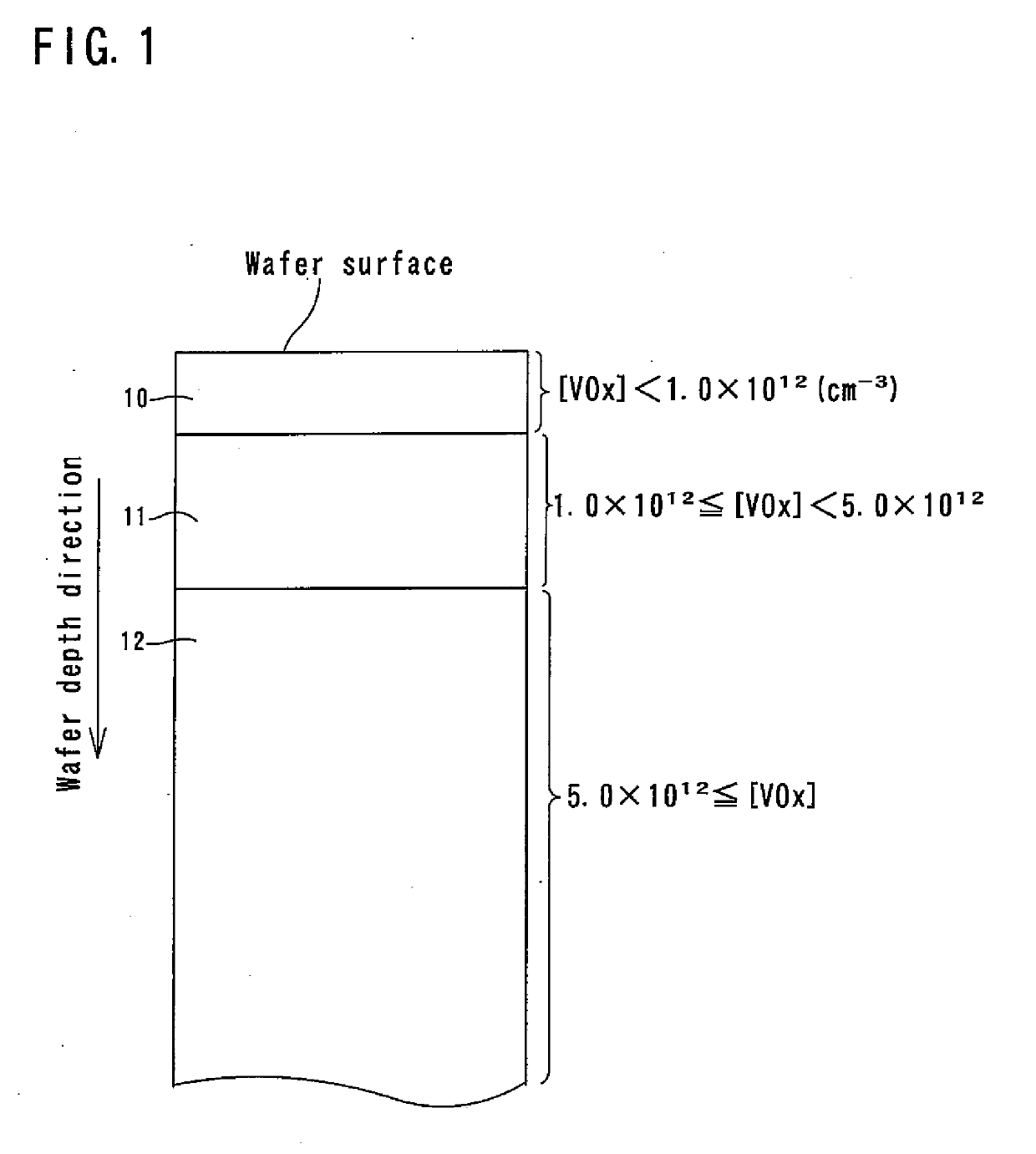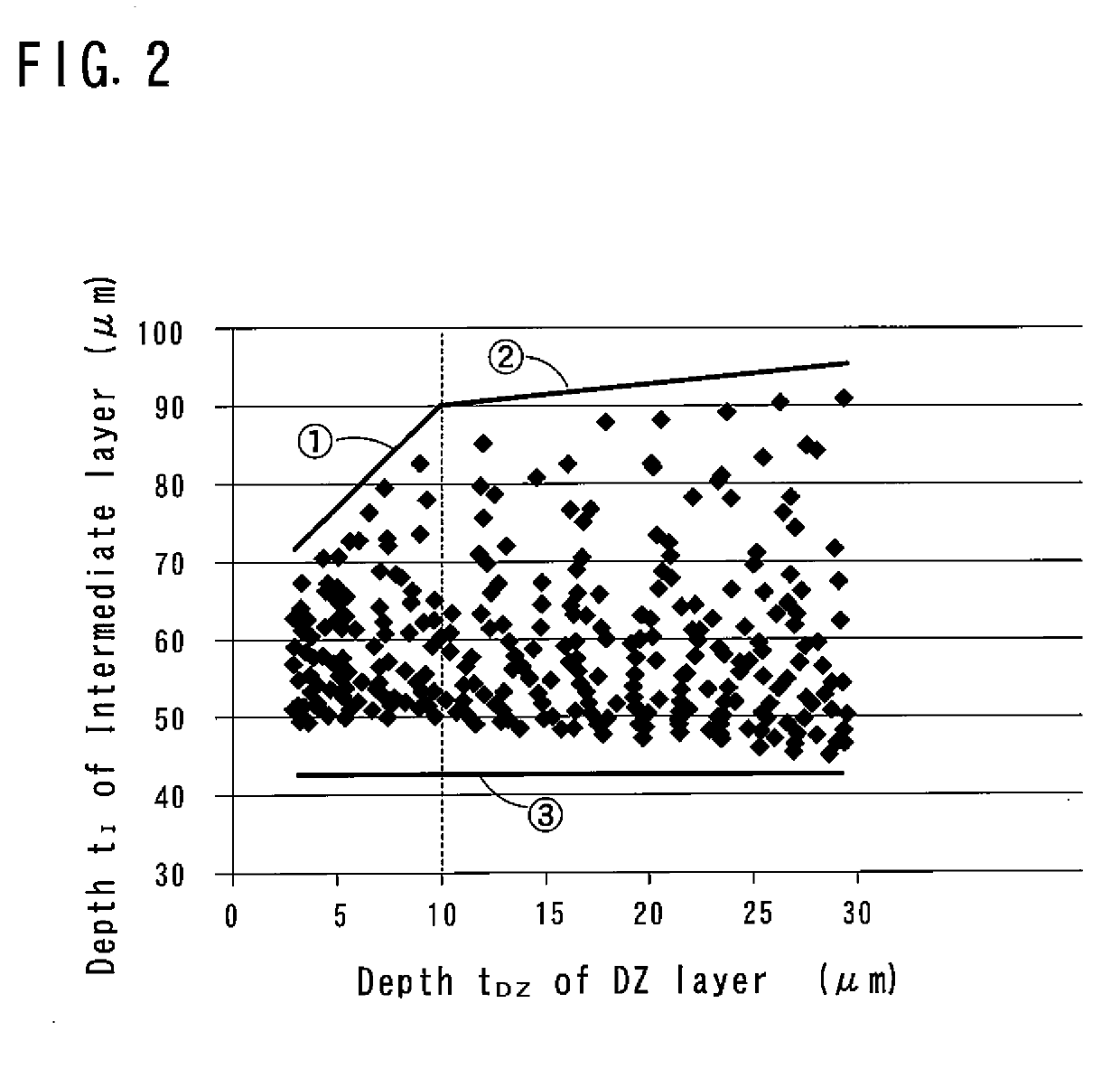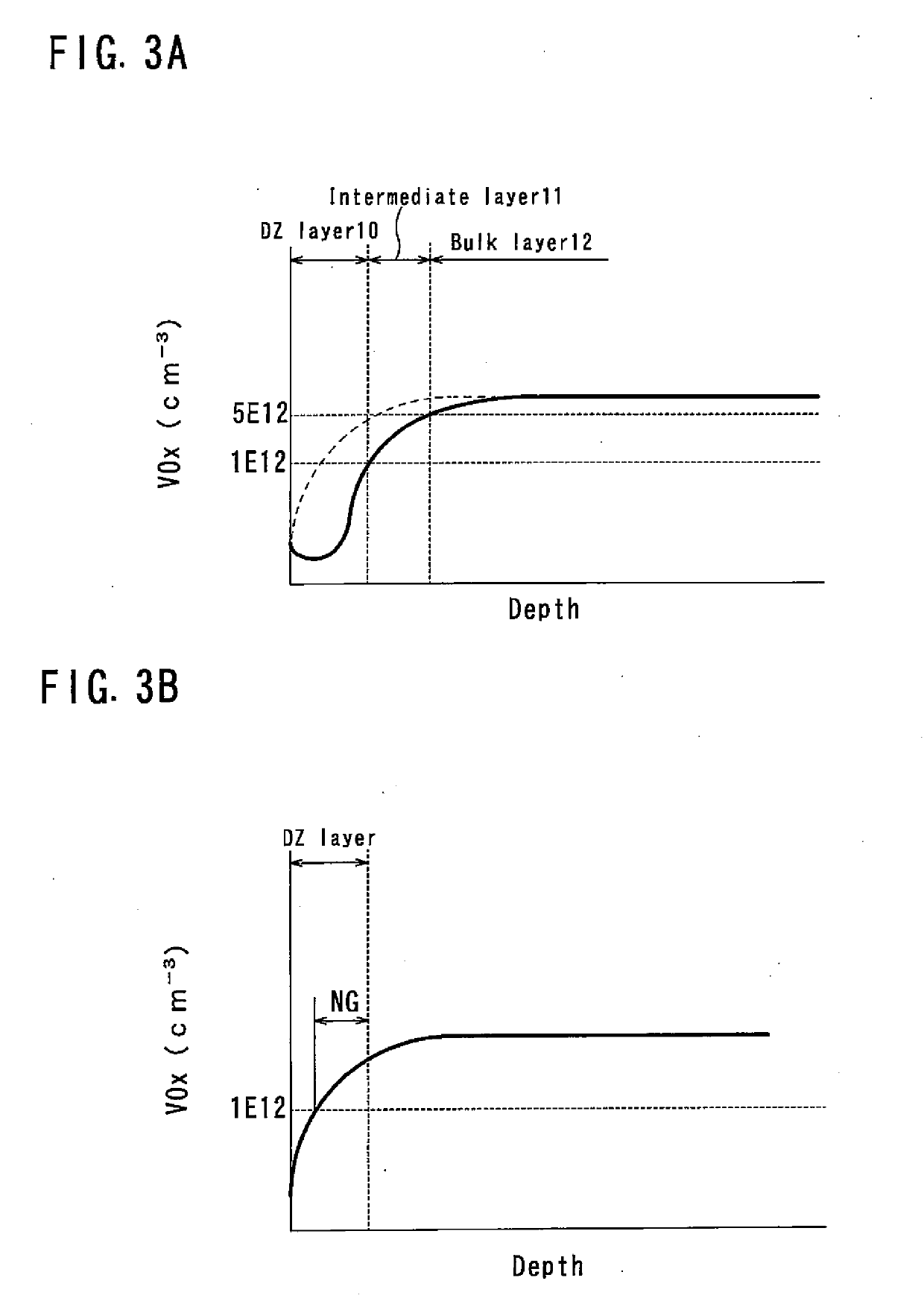Silicon wafer
- Summary
- Abstract
- Description
- Claims
- Application Information
AI Technical Summary
Benefits of technology
Problems solved by technology
Method used
Image
Examples
Embodiment Construction
[0036]FIG. 1 shows a vertical sectional view of the silicon wafer (hereinafter simply referred to as the “wafer”) according to the present invention. This wafer is sliced from an ingot grown by the Czochralski process. A mirror-finishing its both sides, it is subjected to a rapid thermal process (RTP) comprising the below-described heat treatment sequence (shown in FIG. 4). The wafer has a surface layer comprising a denuded zone (hereinafter referred to as the “DZ layer”) 10 of which the density of the vacancy-oxygen complexes (VOx), i.e., the complexes of vacancies and oxygen, is less than 1.0×1012 / cm3. The depth of the DZ layer is determined corresponding to the kind of semiconductor devices formed on the wafer, and is typically within the range of 3-100 μm.
[0037]By limiting the VOx density of the DZ layer to less than 1.0×1012 / cm3, oxygen precipitates, which could deteriorate the device properties, will not precipitate in the DZ layer 10 during the device manufacturing process. T...
PUM
 Login to View More
Login to View More Abstract
Description
Claims
Application Information
 Login to View More
Login to View More - R&D
- Intellectual Property
- Life Sciences
- Materials
- Tech Scout
- Unparalleled Data Quality
- Higher Quality Content
- 60% Fewer Hallucinations
Browse by: Latest US Patents, China's latest patents, Technical Efficacy Thesaurus, Application Domain, Technology Topic, Popular Technical Reports.
© 2025 PatSnap. All rights reserved.Legal|Privacy policy|Modern Slavery Act Transparency Statement|Sitemap|About US| Contact US: help@patsnap.com



